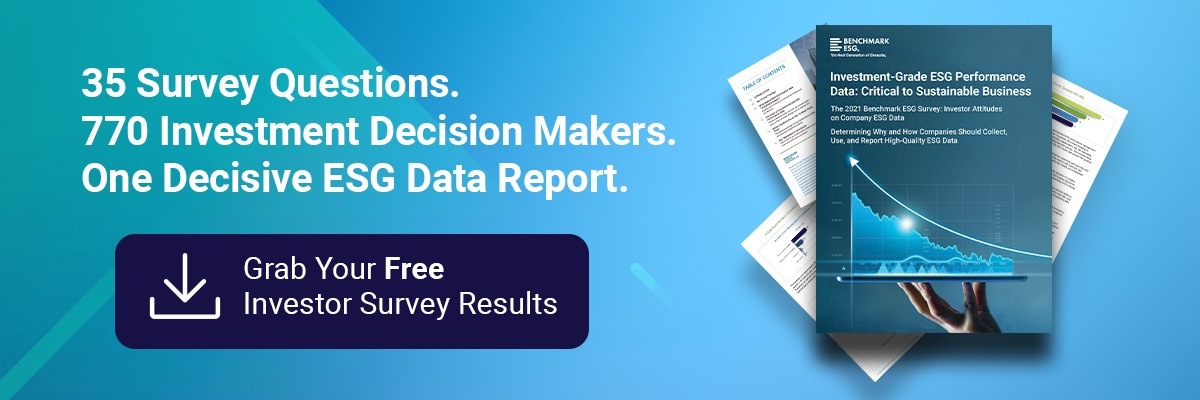A most noteworthy takeaway of the recently completed COP26 event in Glasgow was the announcement on “Finance Day” that nearly 500 global financial services firms agreed to align $130 trillion—some 40% of the world’s financial assets—with the climate goals set out in the Paris Agreement, including limiting global warming to 1.5 degrees Celsius. This commitment was driven by the Glasgow Financial Alliance for Net Zero (GFANZ).
Mark Carney, UN Special Envoy for Climate Action and Finance and the former Governor of the Bank of England, introduced the initiative. He said, “It is about client focus, going to where the emissions are to help get them down. So, companies that have plans in place to reduce the emissions will find the capital, those who don’t won’t. So I highly recommend getting those plans in place.”
Audrey Choi, Chief Sustainability Officer of Morgan Stanley, responded to this challenge:
“We are literally here creating a new industry, new ground rules for a new industry that is prioritizing climate action. For that we need all the traditional things, we need measurement, we need metrics, we need reporting…I want to take the opportunity to share that we will be announcing our first round of interim targets.”
Environmental Sustainability Is Now a Corporate Priority
This is a welcome development in the ongoing battle to address the climate crisis, even if some skeptics complain about lack of specific commitments behind the headline.
I often see debates about what is really needed to effect change. Is it regulation? Shouldn’t the private sector play a leadership role when so many governments are dragging their feet, driven by election cycles? Don’t individual buying choices have an impact? Isn’t it all driven by investment decisions anyway?
The answer is, it’s all of these things. We won’t get to where we need to be without the sustainability standards becoming law; governments have been the single most effective drivers of change through history. Consumers, also, can be very effective in pressuring corporates and governments to change. But the relatively recent embrace of sustainability by the investment community at scale is going to turbocharge all these drivers—and force many companies to stop clinging to old business models and embrace a transition to a green economy.

The Challenge for Companies: Ensuring Data Quality and Navigating Reporting Frameworks
This climate pledge is a fantastic development, and it may give us a real chance of avoiding catastrophic climate change (although even the 1.5-degree limit set in the Paris agreement will be disastrous enough). Nevertheless, it does present a new set of challenges for the Environmental Health & Safety (EHS) and Sustainability community.
In the course of developing a digital ESG solution designed to meet these challenges, our team has interacted with a range of stakeholders in the investment community: private equity houses, institutional investors, asset managers, lawyers, accountants and advisors. We hear the same message over and over: “We want to facilitate the flow of capital into sustainable businesses, but we don’t know how. Where is the data to support our decision making?” When describing how Investment Committees make their decisions, one insider told us, “The data drives the discussion.” Any Deal Team that makes a pitch with poor or incomplete ESG credentials will be shown the door.
Of course, sustainability reporting is not new, and there is a dizzying array of standards and frameworks that can be used. This in itself poses a challenge for business leaders and can lead to a fragmented and inconsistent reporting landscape, preventing investors from comparing like-for-like options.
The recent launch of the International Sustainability Standards Board (ISSB) is a big step in the right direction, however, and it’s a milestone along the path to globally consistent and mandatory sustainability reporting. The ISSB brings together the Value Reporting Foundation (VRF) and the Climate Disclosure Standards Board (CDSB) and is expected to release a revised standard mid-2022, taking forward the work of those two organizations.
The Value of Aligning With the Value Reporting Foundation
Benchmark Gensuite® has become an Alliance Member of the Value Reporting Foundation (VRF) and, as such, will continue to work with the organization as it evolves into the ISSB next year. We joined the VRF in recognition of the power of the reporting tools they have developed: the Integrated Reporting Framework, the Materiality Map, and the Sustainability Accounting Standards Board (SASB) Standard.
The tools provided by the VRF provide industry classifications, issue categories, industry-specific topics and accounting metrics to guide disclosure, which are the basis for a standardized analytical format. As an Alliance Member, we’re integrating these tools so our subscribers can move along the entire data value chain—from source data collection to ESG disclosure—in a consistent, repeatable and reliable process.
With the power to generate SASB disclosures digitally, our subscribers will not only be able to deliver assured investment-grade data in a language the investment community understands, but also be aligned with the leading sustainability accounting standard—one that is likely to become the global standard for reporting sustainability performance and delivering legally mandated disclosures. In effect, when investors say “show us the data,” it will be easy to respond in a credible and reliable manner with fit-for-purpose data.
All reporting needs context, and the ability to benchmark is crucial. By using the VRF standard, our subscribers will also be able to measure their performance against their peers and validate their own achievements.
Another compelling proposition from the VRF is the industry collaboration that it facilitates through Deep Dive Calls, Workshops, Training, Policy Briefings and Webinars. As a mission-driven company that seeks to promote sustainability and ESG best practice, we know the VRF will be a valuable professional resource, and we look forward to engaging with ESG leaders from many industries—along with those we’ve joined in support of the Taskforce on Climate-Related Financial Disclosure (TCFD).
With the Right Tools, You Can Help Drive Meaningful Change
The ESG disclosure director tools provided by VRF (along with other frameworks such as the TCFD, GRI and CDP) will provide the foundation for the alignment of $130 trillion committed to in Glasgow. As world-changing investment decisions are made over the next decade, the VRF framework will help investors choose wisely.
We have much work to do before we can fully align capital flows to the 1.5 degrees target, but it’s a further step along the path, and it’s one that Benchmark Gensuite is proud to support. If you’d like to learn more about the VRF and how you can incorporate these tools in your ESG reporting process, contact us today.
Get the ESG Insights
You Need to Succeed
Engage ESG experts and peers on best practices, breaking developments, and emerging trends. Register today for our ESG Executive Collaboration Forum on Dec. 8!
8
December
2021



